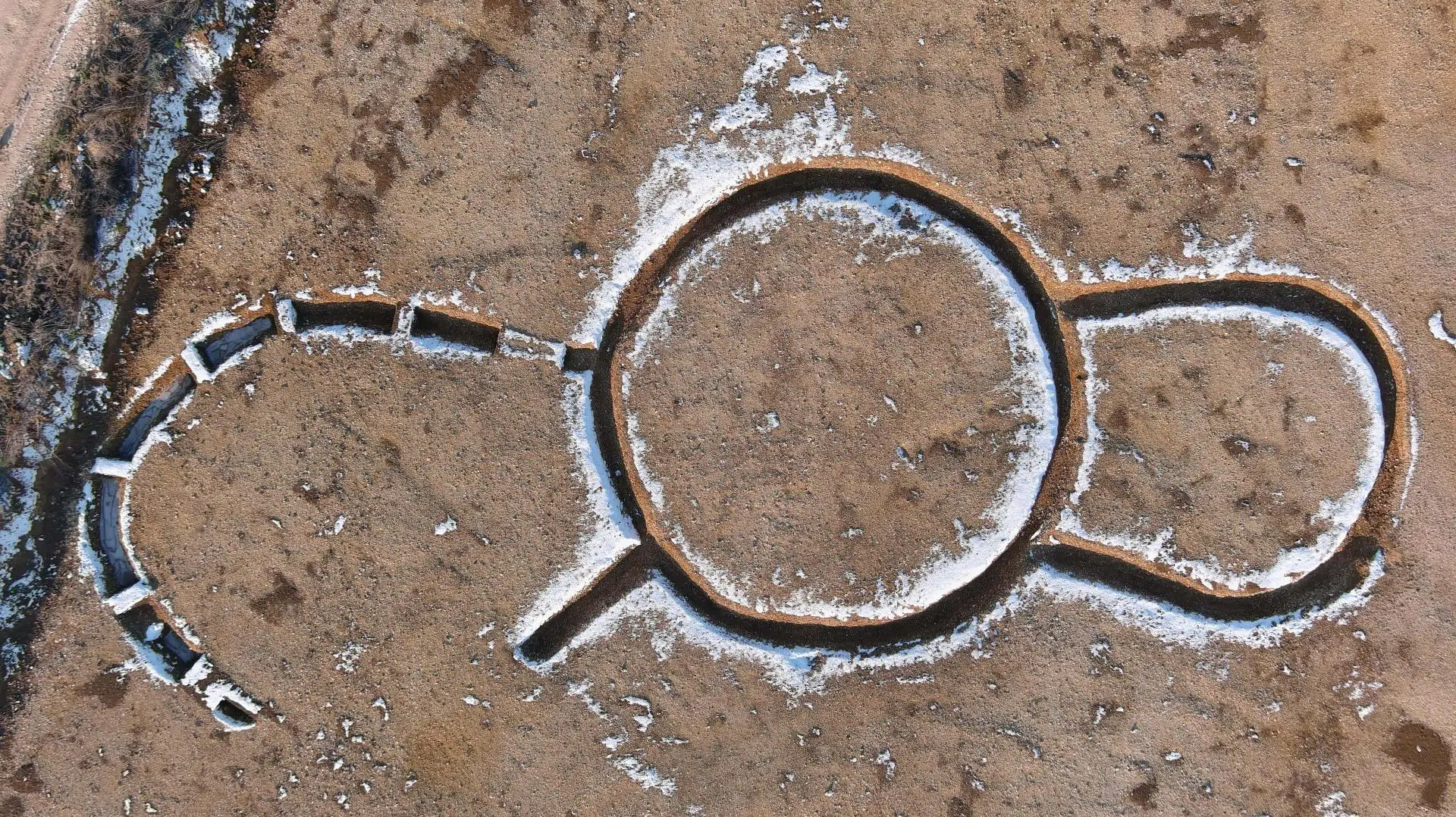
An ancient monument dsicovered in Eastern France has caused curiosity with not just one but three connected ancient circular structures.
The French National Institute for Preventive Archaeological Research (Inrap) describes the find in Marliens near Dijon as “unprecedented.” Digging up the site revealed evidence of human activity from the Neolithic era to the First Iron Age.
Three connected enclosures including a horseshoe-shaped one
The oldest part of the site includes a monument made up of three connected enclosures. The main circle in the center measures 36 feet across, making it the biggest.
On the north side, there’s a smaller horseshoe-shaped enclosure that is about 26 feet long. That is directly linked to the main circle. On the south side, there’s a circular design that’s open on one side but still connected to the main circle.
The team believes all three structures are related both in their layout and time of construction. They also found a layer of gravel on the two side enclosures, indicating there might have been a fence around them, as reported by Popular Mechanics.
The research team stated they had never seen a monument like this before, and nothing comparable had previously been found. They discovered several artifacts in the ditches of the site, including seven flint arrowheads, two archer’s bracers, a flint lighter, and a copper alloy dagger.
These items match cut flints, indicating they might belong to the Neolithic period, possibly dating as far back as 10,000 to 2,200 BC. The team plans to use radiocarbon analysis to pinpoint the exact age.
Traces of iron oxide to light fires
The team found an armband with iron oxide traces attached to pyrite, suggesting it might have been used for igniting fires. Such items are commonly found with burials, but the team is not yet certain if that is the case.
The scientists plan to analyze the composition of the copper alloy dagger to determine where it came from and learn about trade during that period.
In a different area of the site, the team discovered five circular enclosures spread across a 64,000-square-foot area. Four of these were open, while one was closed. It was determined these structures were built between 1500 BC and 1300 BC.
In the ditches surrounding the largest enclosure, they found evidence of burials and a funeral pyre. However, due to the acidic soil, the team couldn’t find any well-preserved bones from complete burials.
They dated these findings using five copper alloy pins, a necklace with 40 amber beads, and some rare ceramic fragments, all of which confirmed the timeframe.
See all the latest news from Greece and the world at Greekreporter.com. Contact our newsroom to report an update or send your story, photos and videos. Follow GR on Google News and subscribe here to our daily email!



